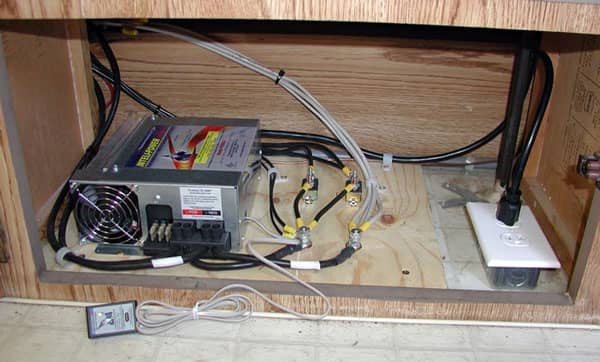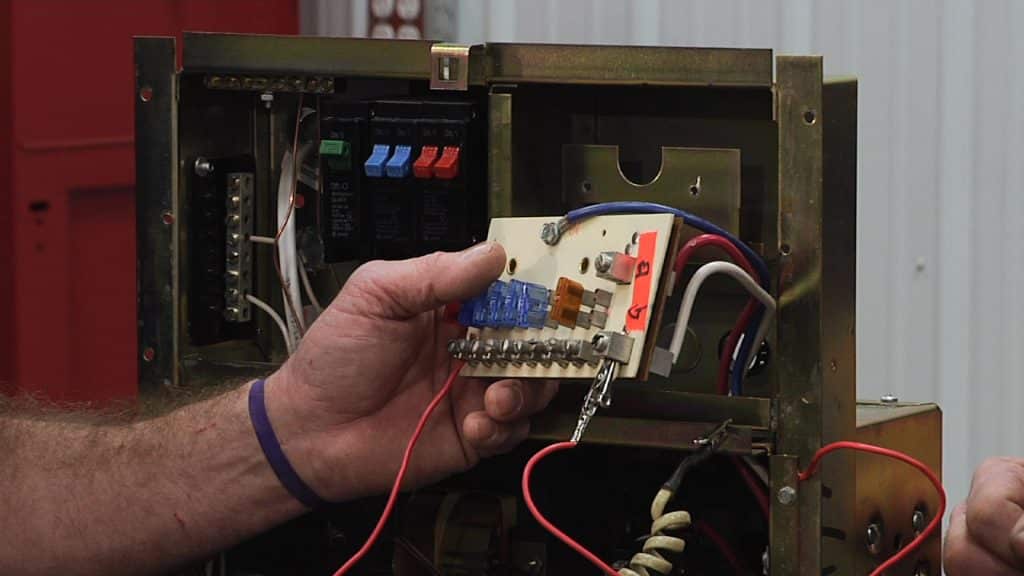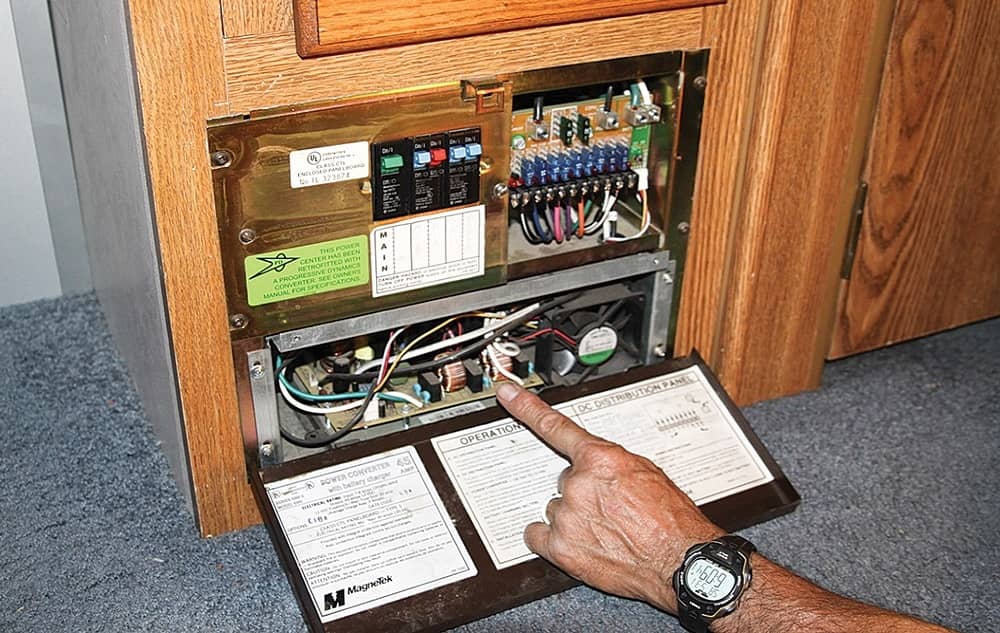When you buy through links on our site, we may earn an affiliate commission, Read More.
Ever spend hours trying to find why your RV converter fan not working and you end up with a bad power converter? If this sounds similar, I know how frustrating it can get.
To end your suffering, today I am going to cover ways to fix that particular problem. In addition to that, you will also find vital maintenance tips and FAQs at the end so you don’t feel helpless from now on.
Without further delay, let’s get things underway!
Tools You Might Need Fixing the RV Converter Fan Not Running
Before you start, keep in mind that you will be working with AC rated at 120V/240V. That rating is very lethal for any living thing regardless of the size. So if you are not confident enough, it’s best to leave it to the professionals.
But if you have experience dealing with electronic circuits in the past, things could be easier for you.
However, here is the list of things you will need to diagnose and fix an RV converter cooling fan.
- Multimeter
- Standard toolkit for electric work
- Safety gloves
- Goggles
- Manufacturers troubleshoot guide
- Replacement fan (if need)
- Air Blower
- Contact cleaner
RV Converter Fan Not Working: List of Causes with Solutions
1. Internal Component Fault
Well, there are tons of transistors and solenoids inside a converter that alone can prompt RV electrical problems. If all other parts like the power jack, fan, and fuse are in good condition, then it must be the faulty components. But it’s not that simple to diagnose component faults from the outside.
To do that appropriately, you need to check inside each resistor individually. Remember, if you still have a few months left on the warranty, you should give it to the authorized service center. You might even get a new one if the problem is severe. So keep an open eye on the warranty period.
Solution:
Now let’s talk about after warranty RV converter troubleshooting. First, check the shore power plug with Multimeter to see if it’s delivering proper voltage. Then check circuitry after the fuse to make sure the converter is getting the proper amount of voltage and amps.
After that, check the main transformer that converts AC power to DC is receiving full 120v. Here the manufacturer troubleshoots guide and schematic will greatly help to identify the components. Lastly, check the cooling fan header fan to see the fan is getting rated voltage.
In case you need to change a non-responsive fan, verify the rated voltage for the fan. Because most electronic stores sell both the 120v and 12V fans. So try to match the rated voltage with your original one. You also may need to remove some screws to get in.
2. Jammed Fan

Most RV owners tucks their electronic components deep behind drawers or compartments to be less eyesore. In the case of an RV power converter, it’s due to RV power converter fan noise. So it’s not that unlikely to see the cooling fan housing build up a ton of dust and sticky grease.
If that happens over time, your fan may inevitably have jammed for that reason. As a result, your RV converter is not working how it’s supposed to do.
Solution:
There’s an easy fix for that problem if you own an Electric Duster. Just aim and press the button to blow off all the dust from the fan housing. After that, your fan should be clean and restrained free to do its job of cooling.
3. Input Jack Problem
Another common reason for the converter fan won’t work is if it has any issue with the input jack or the connector. Well, the weather sometimes aids in putting a non-conductive substance layer on the port or connector. If that’s what took place on the pins it would not complete the circuit and the fan won’t spin either.
Solution:
The good practice is to check before you plug into the converter. Sometimes only looking at it can’t quite solve the conductivity obstruction. Here you can administer a gentle air blow to get rid of any dust in there.
If that doesn’t help, use a Contact Cleaner to clean any nonconductive residue.
4. Cold Weather
The main functionality behind a fan in electronics is to introduce airflow to keep components cool. The same goes for the shore power converter in an RV. You won’t see the RV converter fan keeps running all the time.
It’s because inside the converter, there is a temperature sensor that tells the fan when to spin. So, after you plug the shore power to the converter, the cooling fan won’t turn on immediately. It will only start after sensing that the internal components are heating up.
That said, if you are in a cold environment and discover the inner fan is not working, it’s possible the sensor isn’t detecting any heat.
Solution:
You can quick-check the sensor by blowing hot air with a Heat Gun. That hot air will trigger the fan to start.
5. Blown Fuse

Blown fuses are a pretty common nuisance in auto electronics. Most automotive circuitries are not that AMP hungry when it comes to powering something. That’s why there are strict amp limitations in every component whether it’s a light or an electric motor.
For the same purpose, the power converter in RV has a dedicated fuse to prevent damage from over current. If that fuse cut the electric circuit loop, power won’t be able to get into the converter. Similarly, unless you change the fuse, the fan won’t be rotating any time soon.
Solution:
It’s not that hard to get a Replacement fuse if you know where to look. Just make sure you are buying the same fuse that the manufacturer recommends.
how to tell if rv converter is bad

To give you an idea of the RV converter, it’s a small piece of device that converts 120 volt AC power to 12 volt DC power. As a result, internal house batteries can collect charges for future use.
For an RV, the converter is the most important section for the battery system. When you are on a long trip and you don’t have a solar panel, you are mostly depending on the batteries you have. But on the road, anything can happen at any moment.
That makes you more susceptible to power shortage unless you have an alternate way to charge your batteries. That’s where the power converter comes to the rescue by giving you a reliable way to fill up your batteries.
Here is how to tell if your RV converter is bad.
1. RV converter draining the battery
RV generally has multiple numbers of batteries in the set to run all the lights and appliances properly. To maintain stable discharge, you also need to charge each battery with exact voltage and amps. If that does not happen properly, one battery will charge faster than the other battery.
This will lead the batteries into stress for finding the balance between batteries when discharging. It can also steer other good batteries to a bad one if the problem isn’t diagnosed soon enough.
2. Interior light flickering
When plugged into shore power the converter supplies enough power for the batteries to charge. And at the same time, other appliances can similarly run on the converter power. But if you see light flickering and appliances not running well is an indication of a faulty converter.
3. Converter fan not working
This is a pretty popular one. As I said earlier, the fan is there for cooling vital components that may heat up during power conversion. If you find out that your converter is taking proper power but the RV converter fan turns on and off randomly, you might have a faulty converter in your hand.
4. Faulty input line
Sometimes defects in the shore power line mirror the same unwanted behavior in the converter level. It means the uncharacteristic performance of an RV converter may come from the faulty power line.
5. Abnormal LED blinking
Most RV dashboards are full of indicator LEDs to get a general idea of the battery state. It helps you keep track of various events and incidents. These LEDs are very sensitive to nonstandard power activities and may show abnormal blinking in the process.
RV Converter Fan Maintenance Tips
Here are couples of maintenance tips to get a few more service years from your RV converter. Remember, with the unchecked converter you can end up with a very bad experience on the road.
- Make it a habit to check your power converter regularly. Whether your RV is a brand new or an old one, never skip a week/day to check everything is going well with the converter.
- Before any long trip, it’s always a good idea to thoroughly check the converter and battery system. If possible charge your batteries and discharge them to detect unwanted behavior. Also, remember to fully charge your batteries before going on a trip.
- Humidity and heat deal great damage to your batteries and electrical circuitries. If your residing area has such environmental traits, you should take extra care of your system. Check your battery health with proper tools. Change the dead cell battery as soon as possible.
- When in a camping ground excited to take advantage of the shore power outlet, follow these carefully. Make sure the power rating is appropriate for your converter. Use surge protectors whenever possible. And make a physical inspection of the outlet for damage or unusual sight.
- The rule of thumb is when it comes to using shore power; don’t turn on the outlet right away. First, check everything is properly connected securely. Then turn on the outlet for power delivery.
FAQs Regarding RV Converter Fan
1. What happens when the RV converter goes bad?
If the AC converter in your RV goes bad these symptoms can be visible across your electrical system
- Abnormal Battery draining
- RV converter not charging the battery
- Light flickering or dimming down
- Appliances not working properly
- Battery dying of over-discharge, and so on.
2. How many volts should an RV converter put out?
RV converter took AC input 120v/240v from the wall outlet and converted them to 12 volts. Technically, to eliminate any power loss the converter actually generates a little bit over 12 like 12.5v or 13V. But not more than 13 volts as it will damage electronic components.
On the other hand, some battery system does require 24v to charge and the special converter does the same in this case.
3. Will an RV converter work without a battery?
In the most general sense, the converter will work without a battery. It’s safe to keep in mind that you are free to use your appliances and electronics as long as you are using shore power. But the moment you are on the road moving you will be depending on your engine battery.
4. Can I change the converter’s cooling fan on my own?
Yes, you can. It’s just behind a few screws. Remember to buy the proper cooling fan. If the rating says 120volt, you should get the 120volt fan. Do not attach a 12volt fan as it will damage the fan.
5. How much does it cost to replace an RV converter?
The converter usually depends on which battery system you are adding to your RV. So within $100-$200 you can have a wide range of RV Converter at your disposal
6. How often do I have to replace the RV converter?
It depends on how well you are maintaining your converter on a regular basis. Frequent diagnosing reveals major issues and helps decide on replacing with a new one.
7. Where is the power converter in my RV?
The converter usually resides with other electronic components such as batteries, solar converter, etc. Sometimes they have their own compartment.
Final Verdict
RV converter fan not working is an unfortunate concern for an RV enthusiast. In most cases the issue is easily rectifiable with proper tools and instructions. Apart from that RV converters last many trips and they rarely break down.
If you are ever trapped in a converter fan situation, I strongly advise seeking professional help as quickly as possible. But in more dire circumstances, I hope the article will give you the confidence you need to move on.


